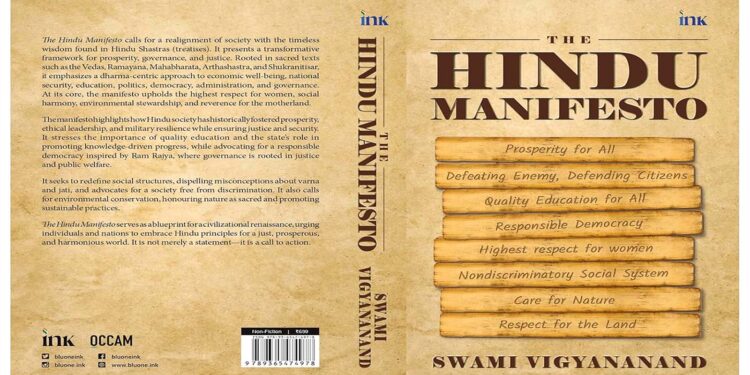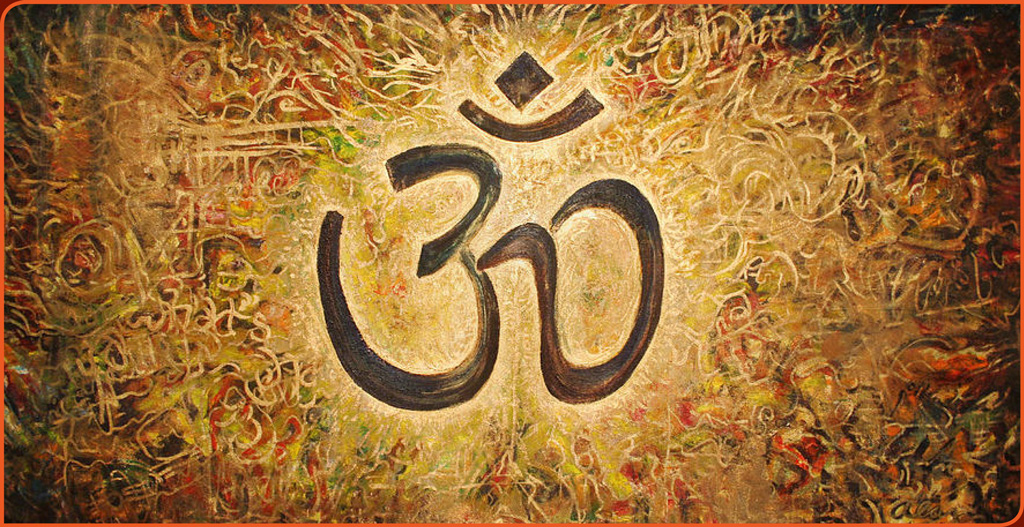Swami Vigyananand’s vision blends ancient wisdom with modern governance in a bold proposal for India’s future
Swami Vigyananand, a revered spiritual leader and scholar, is no ordinary monk. An alumnus of IIT Kharagpur, ordained into the Dasnami Sannyasa tradition at the prestigious Kailash Ashram, and an erudite scholar of Panini’s grammar, Vedanta, and Eastern philosophy, he stands at the rare intersection of science and spirituality. His latest contribution, The Hindu Manifesto, released by RSS Sarsanghachalak Mohan Bhagwat in April 2025, is a sweeping call for India’s civilizational renewal.
This book isn’t a political party’s agenda—it is a cultural, philosophical, and spiritual charter designed to recalibrate India’s national direction through the lens of Sanatan Dharma.
A Journey from Monkhood to Manifesto
Swami Vigyananand’s path was shaped by intense self-inquiry and national service. From walking barefoot across Bharat to helping revive the Amarnath Yatra post-terrorist disruption in the 1990s, he has been a steadfast advocate for Hindu resurgence. As Joint General Secretary of the Vishva Hindu Parishad (VHP) and founder of the World Hindu Economic Forum (WHEF), he has tirelessly championed the cause of Hindu empowerment—economically, culturally, and spiritually.
His conviction? “Economic empowerment is essential for spiritual growth and cultural revival.”
The Hindu Manifesto: A Vision Beyond Politics
At its core, The Hindu Manifesto proposes a Dharma-driven framework for governance, social order, and national progress. Drawing deeply from the Vedas, Mahabharata, Ramayana, Bhagavad Gita, and Arthashastra, the book argues that the Indian state must be re-rooted in its civilizational ethos.
Rejecting both Western capitalism and socialism, Swamiji proposes a Dharma-centric economic model—one that encourages wealth creation without greed, and governance with moral clarity.
Eight Sutras: The Pillars of the Manifesto
The manifesto is organized around eight sutras, or principles—four to build national strength, and four to sustain cultural values:
- Prosperity for All (Sarvajan Hitaya)
- Advocates ethical capitalism rooted in Dharma.
- Promotes self-reliance, rural entrepreneurship, and sustainable development.
- National Security
- Calls for a proactive defense strategy, both military and cultural.
- Draws from Kautilya’s Mandala Theory to address modern threats.
- Quality Education
- Integrates ancient Indian knowledge systems into the modern curriculum.
- Urges a break from “Eurocentric distortions” in history and pedagogy.
- Responsible Democracy
- Encourages Dharmic leadership and citizen accountability.
- Positions democracy as a moral duty, not just a political form.
- Respect for Women (Nari Shakti)
- Celebrates the divine feminine and demands justice for crimes against women.
- Pushes for women’s leadership in all spheres.
- Social Harmony
- Redefines caste as fluid and occupation-based, challenging colonial interpretations.
- Promotes Samajik Samrasta (social cohesion) over division.
- Sacredness of Nature
- Advocates an ecologically conscious Hindu worldview.
- Encourages traditional environmental practices and reverence for nature.
- Pride in Heritage
- Reclaims India’s civilizational narrative and calls out colonial distortions.
- Champions pride in Indic languages, scriptures, and traditions.
Scriptural Depth, Policy Application
Swami Vigyananand supports his vision with a scholarly backbone: Kautilya’s Arthashastra for statecraft, Shukranitisar for ethics, and the Bhagavad Gita for leadership. He cites scriptural limits on taxation, advocates for farmer and artisan dignity, and promotes value-based education rooted in 32 types of ancient vidyas.
Whether addressing GDP growth, judicial reform, or education, The Hindu Manifesto offers scripturally grounded policy recommendations.
Support, Critique, and Controversy
While lauded by the Sangh Parivar and Hindu intellectuals, the manifesto has also drawn criticism:
- Secularism Concerns: Critics worry that the manifesto blurs the line between religion and state.
- Minority Representation: The document’s Hindu-centric vision leaves some questioning its inclusivity.
- Historical Revisionism: Its redefinition of caste and educational history has sparked academic pushback.
- Practical Gaps: Though visionary, some argue it lacks granular policy details.
A Global Hindu Vision
One of the manifesto’s boldest assertions is its universal applicability. Swamiji insists that Hindu civilization isn’t confined by geography. Its values—self-restraint, ecological balance, spiritual inquiry, and collective harmony—offer an ethical counter-model to both Western liberalism and Marxist ideologies.
In his words:
“If our ancestors could excel under foreign rule, what stops us in an era of tech and opportunity?”
“Economic empowerment is essential for spiritual growth and cultural revival.”
“This book is not nostalgic. It is a forward-facing civilizational playbook.”
“The Hindu Manifesto is India’s boldest intellectual intervention in recent history.”
“Dharma is not just spiritual—it’s structural.”
Why This Book Matters
The Hindu Manifesto is not a nostalgic exercise—it is a forward-looking civilizational playbook. As India grapples with internal strife and external threats, the ideas presented—economic dharma, cultural confidence, and spiritual resilience—couldn’t be more timely.
- To Hindu thinkers: A rallying cry for cultural assertion
- To policymakers: A treasure trove of scripturally grounded proposals
- To critics of Western hegemony: A fresh, ancient alternative
- To students and seekers: An entry point into India’s spiritual-political legacy
Conclusion: Dharma as Destiny
In The Hindu Manifesto, Swami Vigyananand has created more than a book—he’s delivered a philosophical intervention in India’s future. It calls for not just reform, but a renaissance, grounded in the soul of a 5,000-year-old civilization.
It may be India’s most important civilizational document of the 21st century.
For those ready to rethink India’s future not just through economics or politics, but through the enduring light of Dharma—this manifesto offers both inspiration and instruction.
The Hindu Manifesto is available at Amazon.




![[ India Today ] Ohio senator JD Vance thanks wife, a Hindu, for helping him find Christian faith](https://hinduvishwa.org/wp-content/uploads/2024/06/us-senator-jd-vance-reveals-how-his-hindu-wife-usha-helped-him-find-his-christian-faith-image-re-272530504-16x9_0-120x86.webp)










